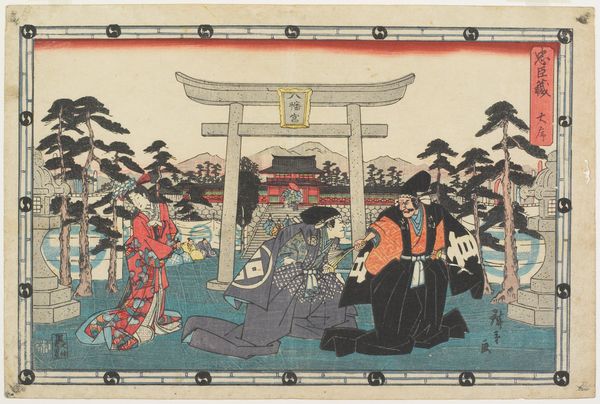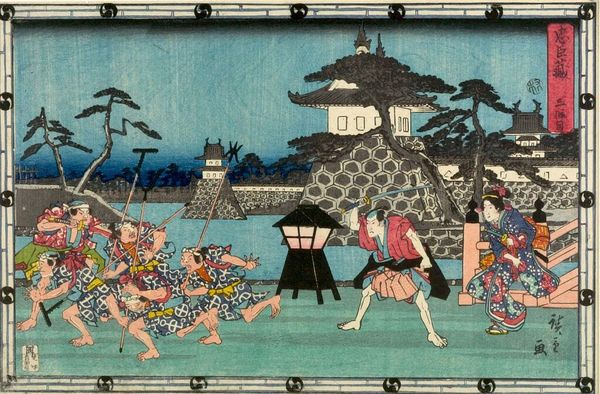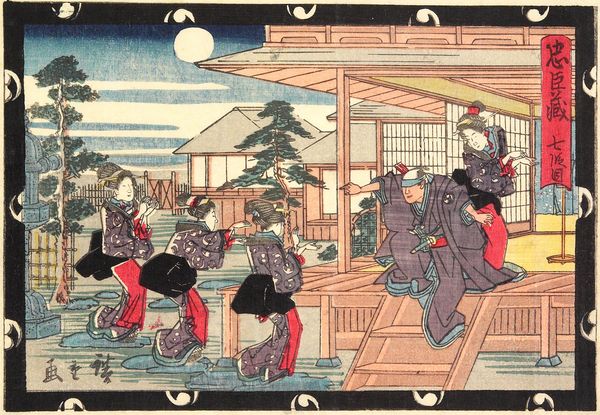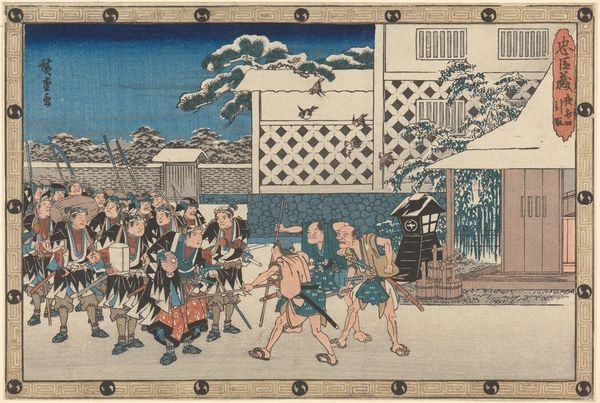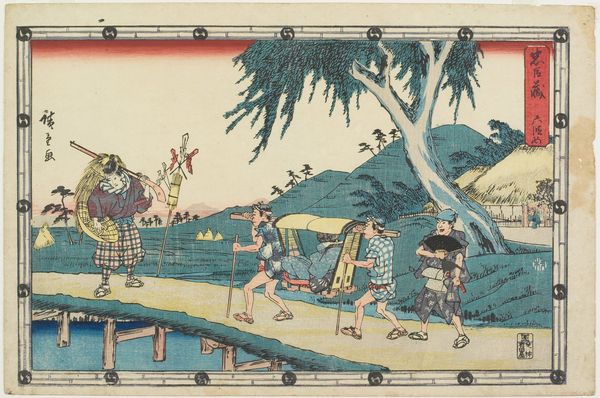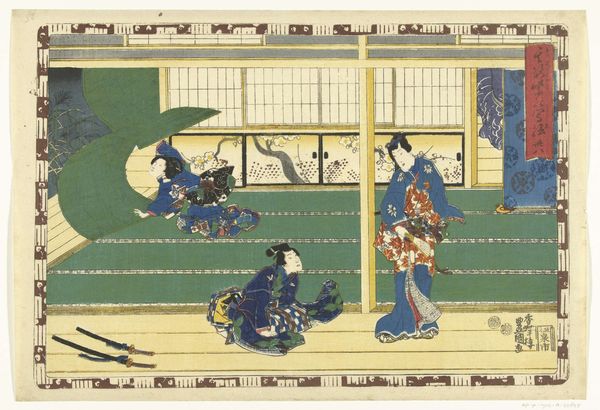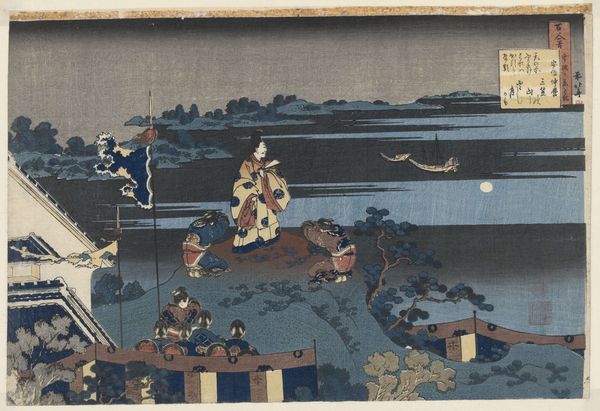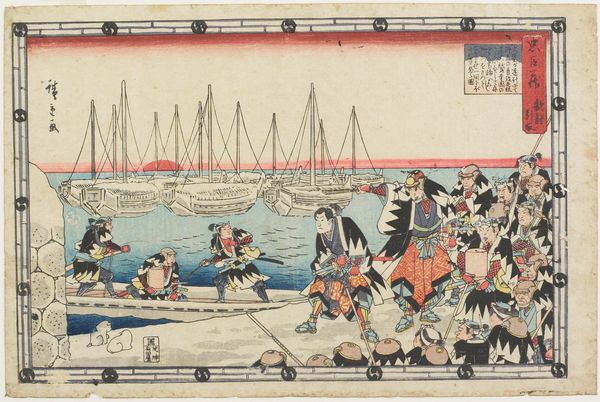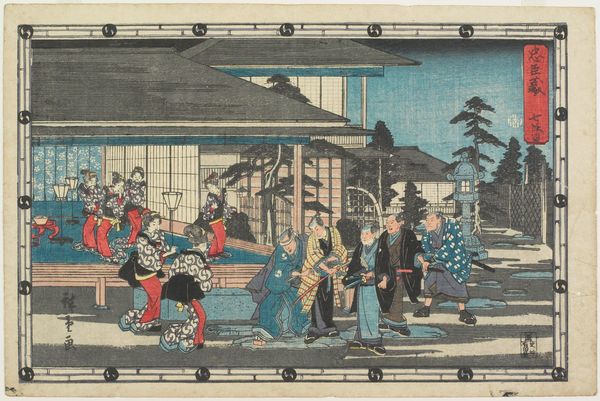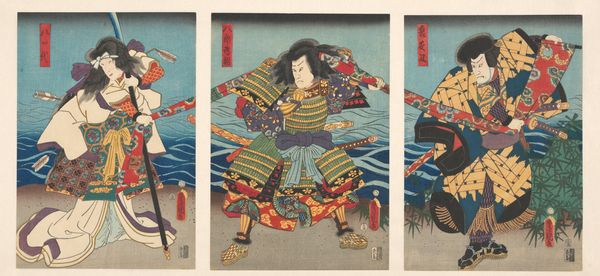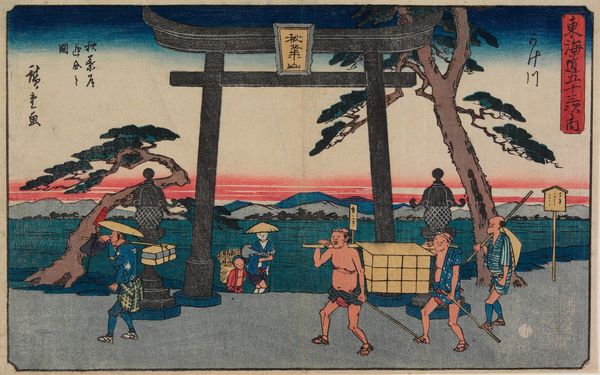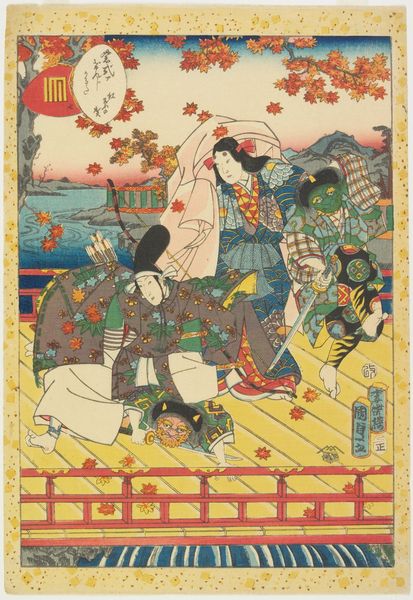
print, ink, woodblock-print
#
water colours
#
narrative-art
# print
#
landscape
#
ukiyo-e
#
japan
#
historical fashion
#
ink
#
woodblock-print
#
genre-painting
#
history-painting
#
watercolor
Dimensions: 9 3/8 × 13 11/16 in. (23.8 × 34.8 cm) (image, horizontal ōban)
Copyright: Public Domain
Editor: Here we have "Act III," a woodblock print in ink and colors, created by Utagawa Hiroshige around 1843-1847. The scene feels incredibly dynamic, full of frantic energy. I'm struck by the almost theatrical quality of the figures and the staged landscape. How do you interpret this work, especially concerning its social or historical implications? Curator: The theatrical quality is key, especially given the rise of ukiyo-e prints and their accessibility to a broader audience. Hiroshige isn't just depicting a scene; he's presenting a narrative. It invites us to consider class structures and power dynamics within feudal Japan. Who are these figures? Are they peasants, warriors, or actors playing a part? Their costumes offer some insight. Editor: The figures on the left seem less armed than the sword wielding people on the right. Could the composition itself speak to power imbalances or social unrest? Curator: Absolutely. The arrangement could be interpreted as a staged confrontation, reflecting the social anxieties of the time. The composition itself performs a kind of cultural commentary. Ukiyo-e prints allowed for dissemination of information, influencing perceptions of current affairs and attitudes. Consider also, how "history" itself is being constructed in this artwork. Is it a glorification or critique? Editor: That’s fascinating. It really shifts how I view the entire piece, realizing it might not be a straightforward historical record. Curator: Precisely. Art is rarely neutral; it's engaged in conversations with power. Understanding that empowers us to engage critically with these works and the societies they reflect. What has this dialogue illuminated for you? Editor: The importance of contextualizing art within its historical and social climate to unveil the embedded commentaries on society, and how prints democratized artistic expression and criticism. Thank you!
Comments
No comments
Be the first to comment and join the conversation on the ultimate creative platform.
